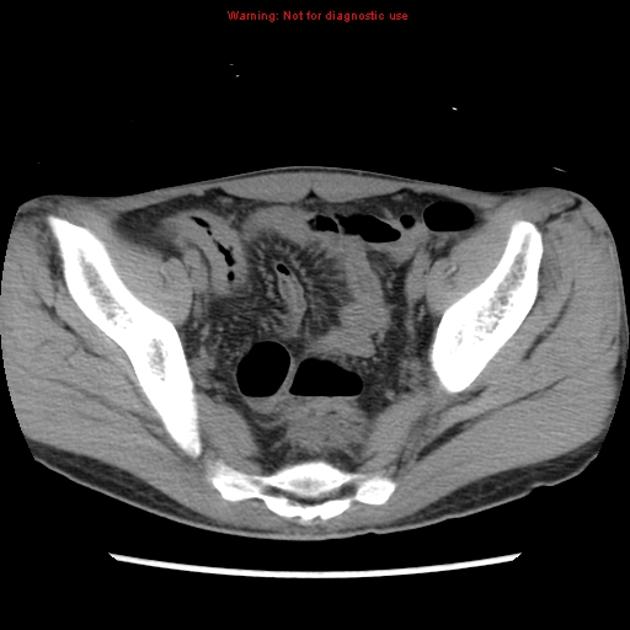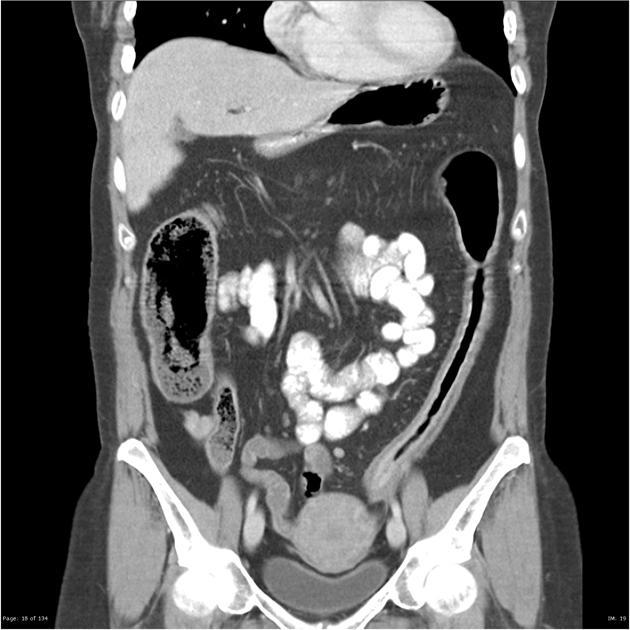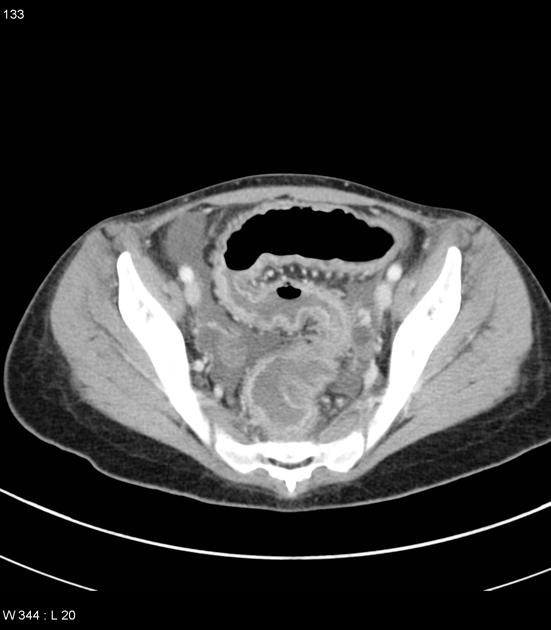This is a basic article for medical students and other non-radiologists
Inflammatory bowel disease is a generic term used to describe diseases of the GI tract that have an inflammatory cause. Crohn disease (CD) and ulcerative colitis (UC) are the commonest causes of inflammatory bowel disease.
On this page:
Reference article
This is a summary article; read more in our article on inflammatory bowel disease.
Summary
-
epidemiology
-
young adults
CD: 15-25 years, M=F
UC: 15-40 years, M>F
-
-
presentation
chronic diarrhea (may be bloody)
abdominal pain
Crohns may present with extra-intestinal features
-
pathophysiology
-
CD: any part of the bowel may be affected
skip lesions, fistulation
UC: only the colon is affected
-
-
investigation
-
treatment
-
disease-modifying drugs
steroids
immunomodulation, e.g. azathioprine, cyclosporine, methotrexate
biological agents, e.g. infliximab
-
surgical treatment
strictures, fistulae, abscess, perforation
non-responding bowel disease, e.g. colectomy
-
Role of imaging
Radiology can be useful for diagnosis and follow-up.
identify abnormal bowel
determine response to therapy
identify complications
Radiographic features
Ultrasound
Bowel ultrasound allows assessment of the whole bowel. It is a relatively simple technique but requires a practitioner who has appropriate experience. It requires patient preparation and cooperation and may take up to 30 minutes.
bowel wall thickening
loss of normal bowel wall architecture
increased vascularity
Ultrasound may also detect complications:
localized perforation
interloop abscess
fistulation
Ultrasound is used in the assessment of rectal disease (endorectal ultrasound) and of liver disease (abdominal ultrasound).
CT
CT with both IV and luminal contrast can be used to assess small and large bowel.
bowel wall thickening
ulceration
strictures
fistulae (CD)
abscess formation and perforation
MRI
MRI is particularly useful in Crohn disease:
assessment of small bowel disease
assessment of perianal fistulae










 Unable to process the form. Check for errors and try again.
Unable to process the form. Check for errors and try again.